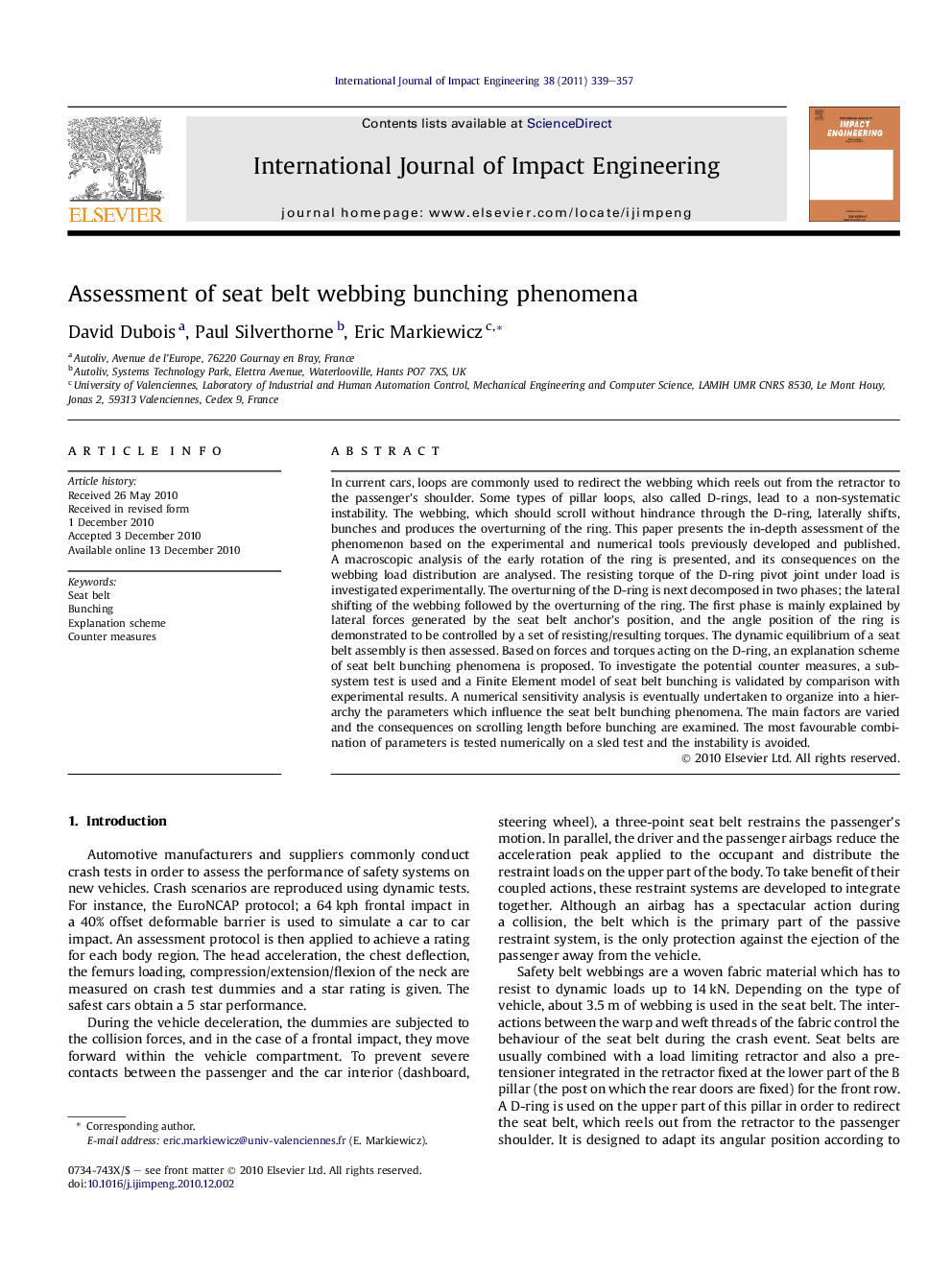| Article ID | Journal | Published Year | Pages | File Type |
|---|---|---|---|---|
| 778688 | International Journal of Impact Engineering | 2011 | 19 Pages |
In current cars, loops are commonly used to redirect the webbing which reels out from the retractor to the passenger’s shoulder. Some types of pillar loops, also called D-rings, lead to a non-systematic instability. The webbing, which should scroll without hindrance through the D-ring, laterally shifts, bunches and produces the overturning of the ring. This paper presents the in-depth assessment of the phenomenon based on the experimental and numerical tools previously developed and published. A macroscopic analysis of the early rotation of the ring is presented, and its consequences on the webbing load distribution are analysed. The resisting torque of the D-ring pivot joint under load is investigated experimentally. The overturning of the D-ring is next decomposed in two phases; the lateral shifting of the webbing followed by the overturning of the ring. The first phase is mainly explained by lateral forces generated by the seat belt anchor’s position, and the angle position of the ring is demonstrated to be controlled by a set of resisting/resulting torques. The dynamic equilibrium of a seat belt assembly is then assessed. Based on forces and torques acting on the D-ring, an explanation scheme of seat belt bunching phenomena is proposed. To investigate the potential counter measures, a sub-system test is used and a Finite Element model of seat belt bunching is validated by comparison with experimental results. A numerical sensitivity analysis is eventually undertaken to organize into a hierarchy the parameters which influence the seat belt bunching phenomena. The main factors are varied and the consequences on scrolling length before bunching are examined. The most favourable combination of parameters is tested numerically on a sled test and the instability is avoided.
